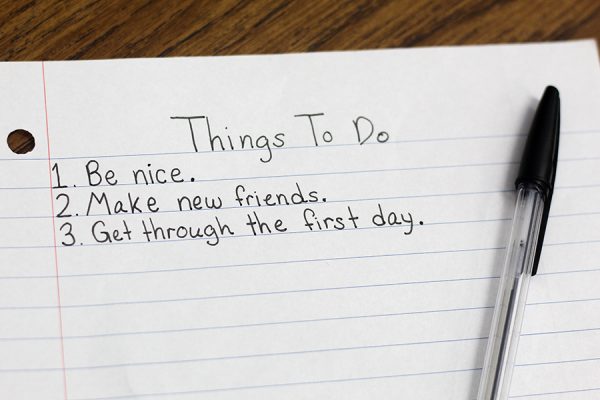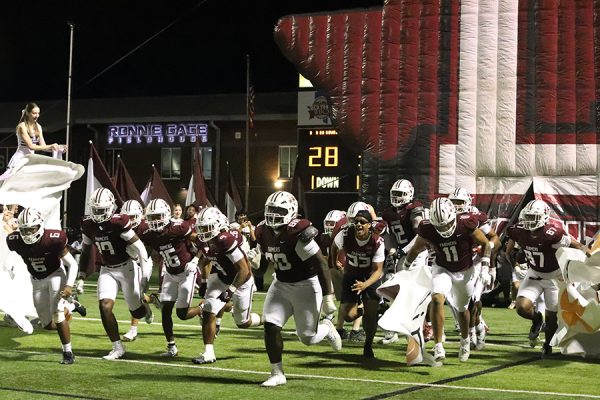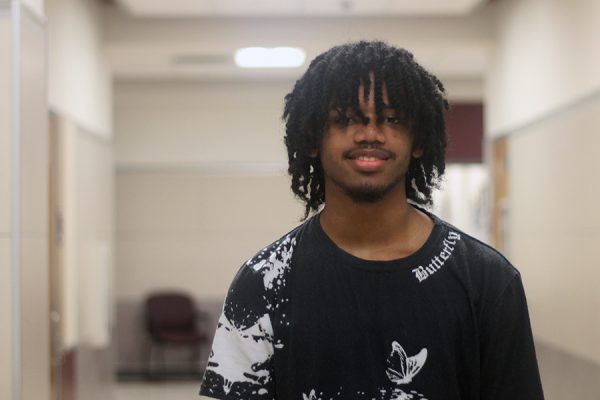Eat up these changes
Harmon breaks lunch into four blocks
Zero lunch students enjoy time before catching the shuttle bus to their next campus.
Lunch: the break between classes. It’s a time to see friends, catch up on the latest drama and eat food. Originally, Harmon students were split into two lunches, A and B. Yet, a new change has split students into four different lunches, ranging from 11:45 a.m. to 2 p.m.
The first lunch, “Zero Lunch,” begins at 11:45 a.m at the end of second period for students who have third period off campus. A Lunch runs from 12:20 p.m. to 12:50 p.m., B Lunch 12:55 p.m. to 1:25 p.m. and C Lunch 1:30 p.m. to 2 p.m. A and B lunches are cut into third period. Students will have class for a certain amount of time, go to lunch then head back to finish third period. While C Lunch students will finish third period, go to lunch, then head straight to fourth period.
“We have found that students are not engaged in any clubs or activities,” Harmon principal Rachel Flanders said. “The social aspect of students being able to collaborate with other students in that fun, non-academic way of clubs, was really missing on campus. We have a hard time getting students into clubs because we can’t meet during advisory due to the fact only half of them are available, and we don’t want to take up lunch. That’s when I really felt like we’ve got to make a change to give more time for clubs.”
Due to low attendance in clubs, Flanders made the difficult decision to pass the Chin festival onto Main campus to continue the tradition. Along with the Chin festival, there were fewer members than usual in last year’s Cinco de Mayo celebration and this year’s Black History Month festivities.
The decision to redesign the lunch schedule was discussed by Flanders along with LISD department chair members, Harmon teachers and club advisers. The change was made to benefit the students, but not all are pleased with it.
“I just don’t think that it was necessary,” sophomore Precious Cornelius said. “Especially considering the timing, students already have enough to deal with since it was midterm week. Though, I’m actually getting used to it. I like how [geometry] gets split up into parts.”
To Flanders, it’s hard to make a system every student and staff enjoys. Before, there were 700 students at each lunch, now there are around 350. For students, they are able to move through the lunch lines quicker, but now they may not get to spend lunch with their friends. For staff, more people are needed to cover lunch duty and change up their class schedule for lunch.
“I like it in the fact that there’s less children running around the cafeteria,” World History teacher Morgan Moody said. “But, I don’t like that I don’t get to have lunch with most of my teacher friends.”
By taking inspiration from other high school schedules, the shift is here to stay. Even though students were not able to take part in making the decision making process, benefiting them by getting their clubs back was the end goal.
“We wanted to run it for four days and see what we needed to do to make tweaks,” Flanders said. “So that after the nine weeks, we really solidified that we have got a system in place that is somewhat perfect.”












